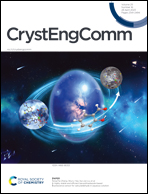Amorphous vs. nanocrystalline calcium phosphate as efficient nanocarriers of elicitors in vineyards†
Abstract
Nanotechnology is emerging as a potential strategy to achieve sustainable agricultural productivity and global food security. Engineered nanoparticles (NPs) are endowed with the ability to deliver active ingredients in a responsive manner, reducing the adverse environmental impacts in comparison to the conventional practices. However, the relationship between NP features (i.e., size, morphology, surface charge, structure, etc.) and functionality has been scarcely studied so far. In this work, two types of calcium phosphate NPs were functionalized with the plant resistance-inductor methyl jasmonate (MeJ), which stimulates the production of secondary plant metabolites (e.g., anthocyanins, stilbenes, and flavonols) in grapes. The properties of the resulting nanomaterials, namely, elongated apatite (Ap-MeJ) and round-shaped amorphous calcium phosphate NPs (ACP-MeJ), were studied in detail. In addition, the loading capacity, release kinetics and elicitor thermal stability of the two nanosystems were compared. The results indicated that the differences in terms of morphology, crystalline structure and surface charge did not affect the release kinetics nor the protective action offered by the NPs. However, ACP-MeJ showed much higher MeJ loading capacity than Ap-MeJ. Both types of nanomaterials exhibited similar performance in field experiments on Monastrell vineyards (Vitis vinifera L.). Foliar application of ACP-MeJ and Ap-MeJ (1 mM MeJ) produced wines with similar contents of anthocyanins and tannins (around 500 mg L−1 and 1100 mg L−1, respectively), but Ap-MeJ treatment required doubling the NP amount due to its lower MeJ adsorption capacity. Both treatments produced wines with higher tannin concentration than wines from non-treated grapes or wine treated with free MeJ at a much higher dosage (10 mM). Results highlight the potential of ACP and Ap NPs as elicitor nanocarriers enabling enhancement of the quality of wine in a more sustainable manner.



 Please wait while we load your content...
Please wait while we load your content...